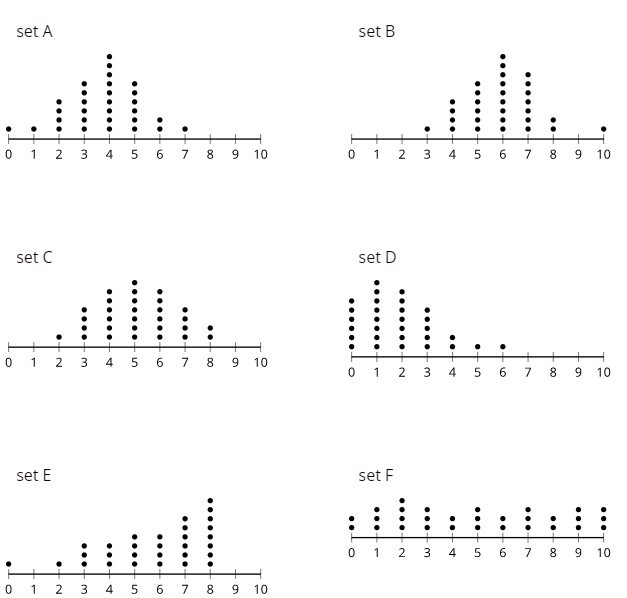Illustrative Math - Algebra 2 - Unit 7 - Lesson 4
By Formative Library
starstarstarstarstar
Last updated about 1 year ago
6 Questions
1
1.
Which statement is true about these 2 distributions?

S.ID.1
S.ID.2
1
2.
Mai collects information about 37 classmates. She believes her data set is perfectly symmetrical with a mean and median of 20. She then realizes that the number she has recorded as 32 was actually supposed to be 42. What is true about the mean and median of her corrected data set?
S.ID.1
S.ID.2
1
3.
Select all distributions which are approximately symmetric.

S.ID.1
S.ID.2
1
4.
In an experimental study, it was noticed that people who eat more leafy, green vegetables tend to get better sleep than the general population. Researchers wonder whether the improved sleep might be caused by the minerals potassium and magnesium found in leafy, green vegetables.
How could the researchers design an experiment to determine the effects of potassium and magnesium on sleep?
S.ID.1
S.ID.2
1
5.
Elena is conducting an experiment to determine if high school students are more relaxed when the lights are off or when music is played during an exam. She selects 10 of her friends to take an exam with the lights off and another 10 of her friends to take an exam with music playing.
What is problematic about the way that Elena selected her groups?
S.ID.1
S.ID.2
1
6.
An environmental education club has 318 members.
Select all methods that would select a sample of 20 members at random from the entire environmental education club.
S.ID.1
S.ID.2
This lesson is from Illustrative Mathematics. Algebra 1, Unit 7, Lesson 4. Internet. Available from https://curriculum.illustrativemathematics.org/HS/teachers/3/7/4/index.html ; accessed 29/July/2021.
IM Algebra 1, Geometry, Algebra 2 is © 2019 Illustrative Mathematics. Licensed under the Creative Commons Attribution 4.0 International License (CC BY 4.0).
The Illustrative Mathematics name and logo are not subject to the Creative Commons license and may not be used without the prior and express written consent of Illustrative Mathematics.
These materials include public domain images or openly licensed images that are copyrighted by their respective owners. Openly licensed images remain under the terms of their respective licenses. See the image attribution section for more information.